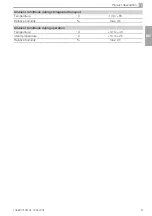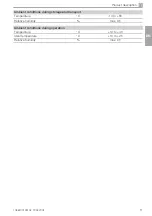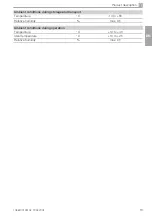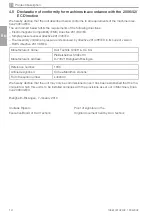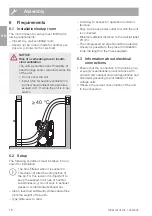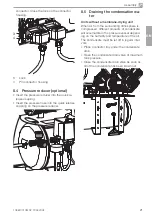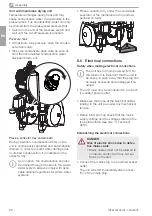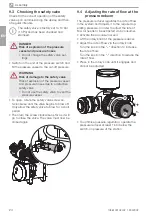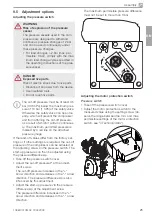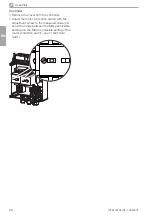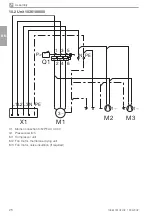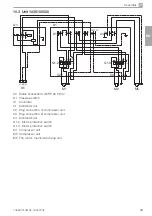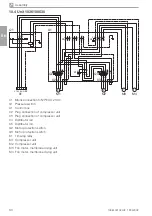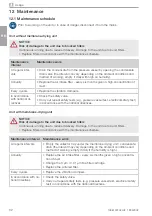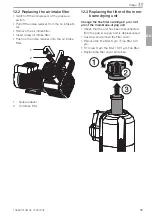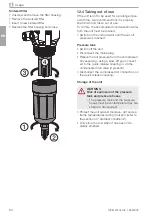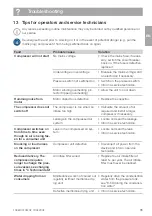
22
1036100102L02 1904V002
Assembly
i
Place a collector tray under the condensate
separator or the membrane drying unit (de-
pending on type).
8.6 Electrical connections
Safety when making electrical connections
The unit has no main power switch. For
this reason it is important that the unit is
be set up in such a way that the plug can
be easily accessed and unplugged if re-
quired.
i
The unit must only be connected to a correct-
ly installed power outlet.
i
Make sure that none of the electrical cables
leading to the unit are under any mechanical
tension.
i
Before initial start-up check that the mains
supply voltage and the voltage stated on the
type plate match (see also "4. Technical
data").
Establishing the electrical connections
DANGER
Risk of electric shock due to defec-
tive mains cable
i
Mains cables must not be allowed to
come into contact with any hot sur-
faces on the unit.
i
Connect the mains plug to an earthed socket
outlet.
The unit will start immediately after connec-
tion of the mains plug.
Unit with membrane drying unit
Temperature changes during transport may
cause condensation water to accumulate in the
pressure tank. The condensation water can only
be drained from the pressurised pressure tank.
i
Switch on the unit at the pressure switch and
wait until the cut-off pressure is reached.
Pressure tank
i
At maximum tank pressure, open the conden-
sate drain valve.
i
Close the condensate drain valve as soon as
all of the accumulated condensation water
has been blown out.
Place a collector tray underneath
During operation, condensation water on the
unit is continuously separated and automatically
drained. In order to prevent water damage due
to drained condensation, it is collected in the
collector tray.
As an option, the condensation can also
be drained through a hose into the waste
water system. Always comply with appli-
cable national regulations for waste water
systems.
EN
Summary of Contents for H2A-160M
Page 2: ......


